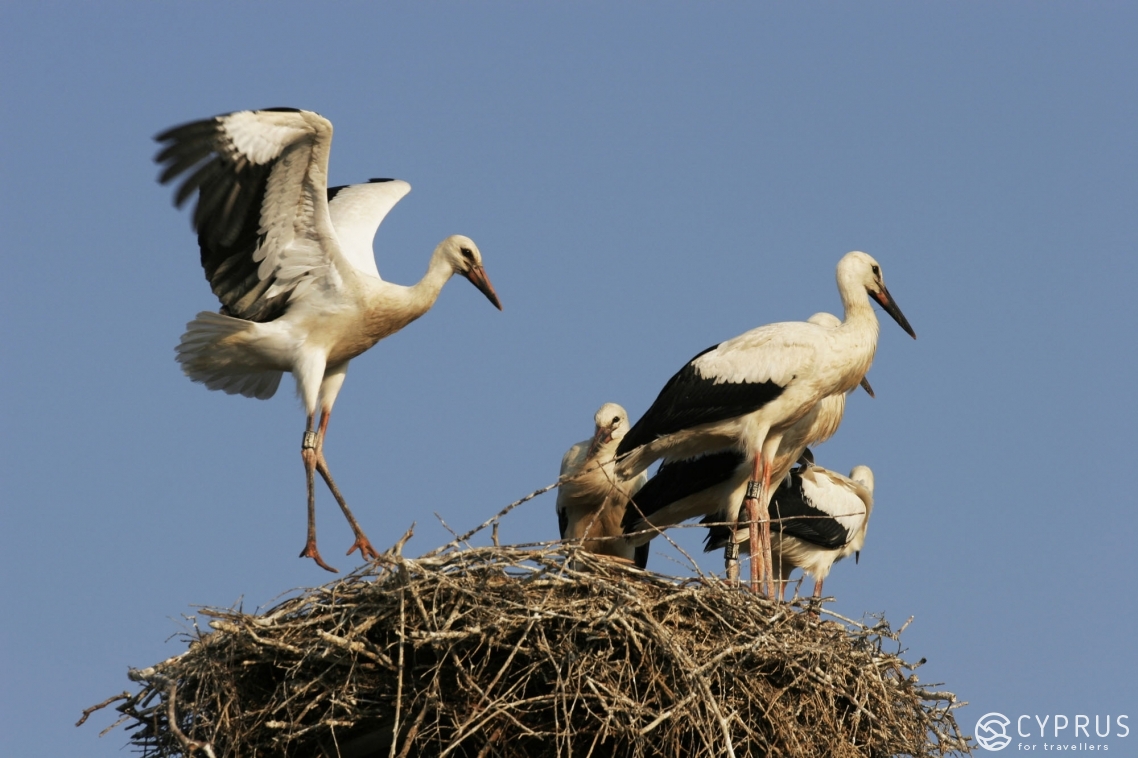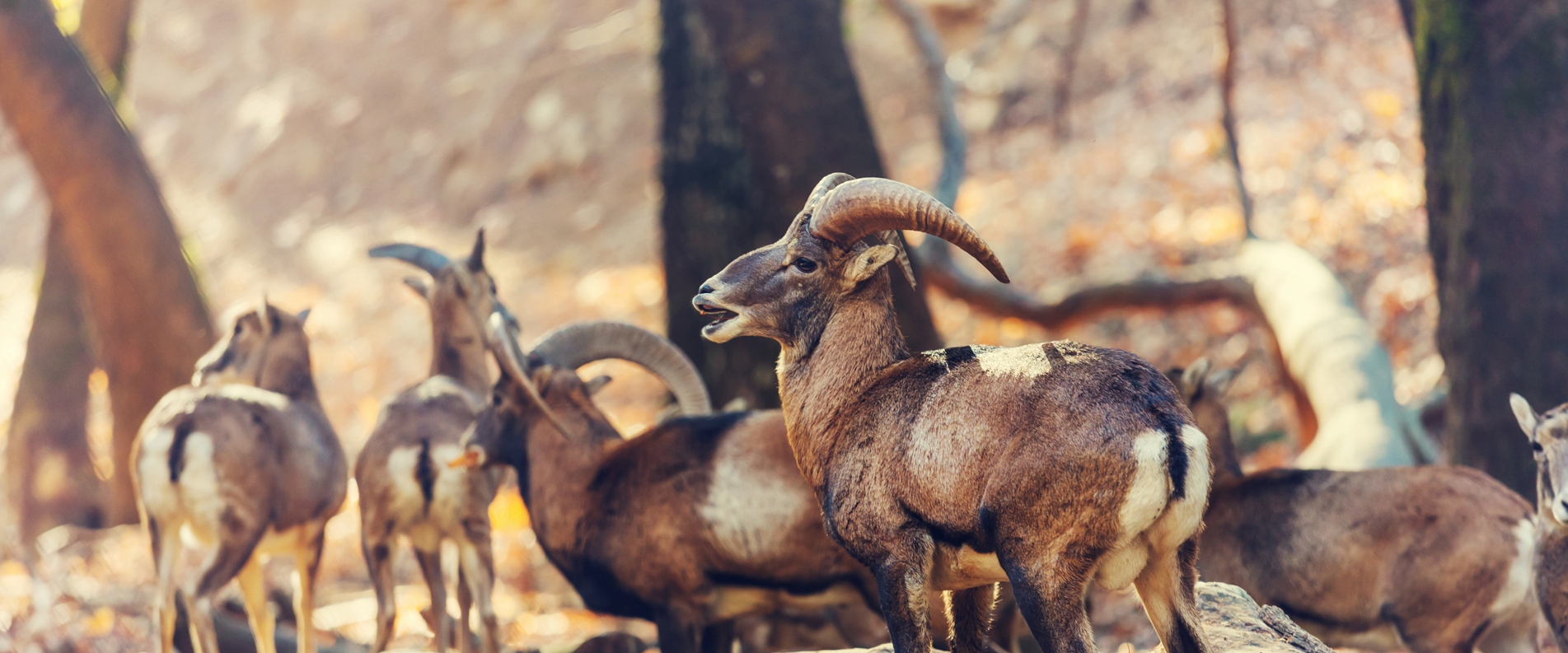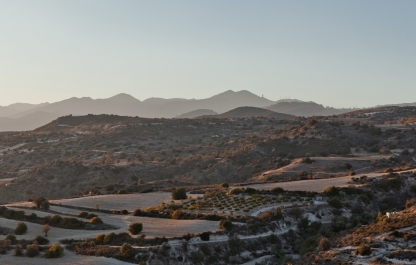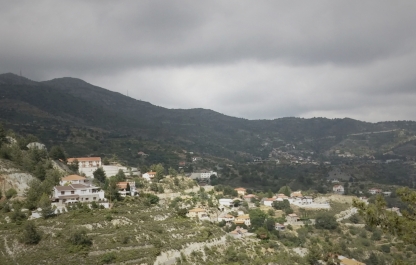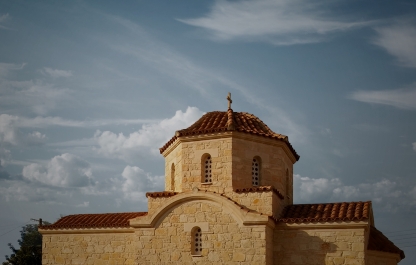Grazing flocks of sheep, mountain donkeys, sea turtles and huge geckos lazing on hotel balconies — all these animals appear before the eyes of practically every tourist who comes to Cyprus. Those people more attentive to fauna, as well as those keen on studying the animal world, may notice or intentionally come across rarer animals on the island: the Cyprus mouflon, the long-eared hedgehog, rare birds of prey, bats and flamingoes, as well as, of course, various representatives of the underwater kingdom: jellyfish, octopi, sea urchins and hundreds of fish species.
What other unusual animals can you encounter in Cyprus? Which species of the animal world make up the island’s wildlife? Answers to these questions and others can be found in our review.
Mammals
Several dozen species of mammal can be found in Cyprus, amongst which there aren’t simply sheep, foxes, hares and rats, but unusual creatures, such as the Mediterranean bat, the common pipistrelle, wild goats and the mouflon. Several species of dolphin, as well as sperm and fin whales, can also be encountered.
The Mouflon is likely the island’s most well-known mammal. These beautiful, spiral-horned animals belong to the Artiodactyla family. Judging from the results of archaeological excavations, mouflon have inhabited Cyprus since the Neolithic era, when the favourite pastime of the nobility was hunting for animals which grazed in the Troodos mountains. Mouflon were hunted over the following centuries, which by the middle of the 20th century naturally led to these animals being under threat of complete extinction in Cyprus. Fortunately, the hunting of mouflon was prohibited before it was too late and the forest area which they inhabited was declared a conservation area. In addition, nature reserves were created which had the task of increasing the mouflon population. In the present day, the mouflon population numbers close to 3,000, which can be encountered in the forests of Paphos (particularly in the forest station Stavros Tis Psokas) or the so-called Cedar Valley.
Interestingly, the mouflon, whose favourite delicacy is the bark of fruit trees and wheat shoots, often becomes a nuisance to local farmers. In such cases, a special pay out is provided by the government, which aids villagers in dealing with the consequences of mouflon foraging their crops.
As you can see from above, the mouflon is loved and valued in modern Cyprus. This animal has become a symbol of the island in its own regard: an image of the mouflon can be seen on banknotes, stamps and coins.
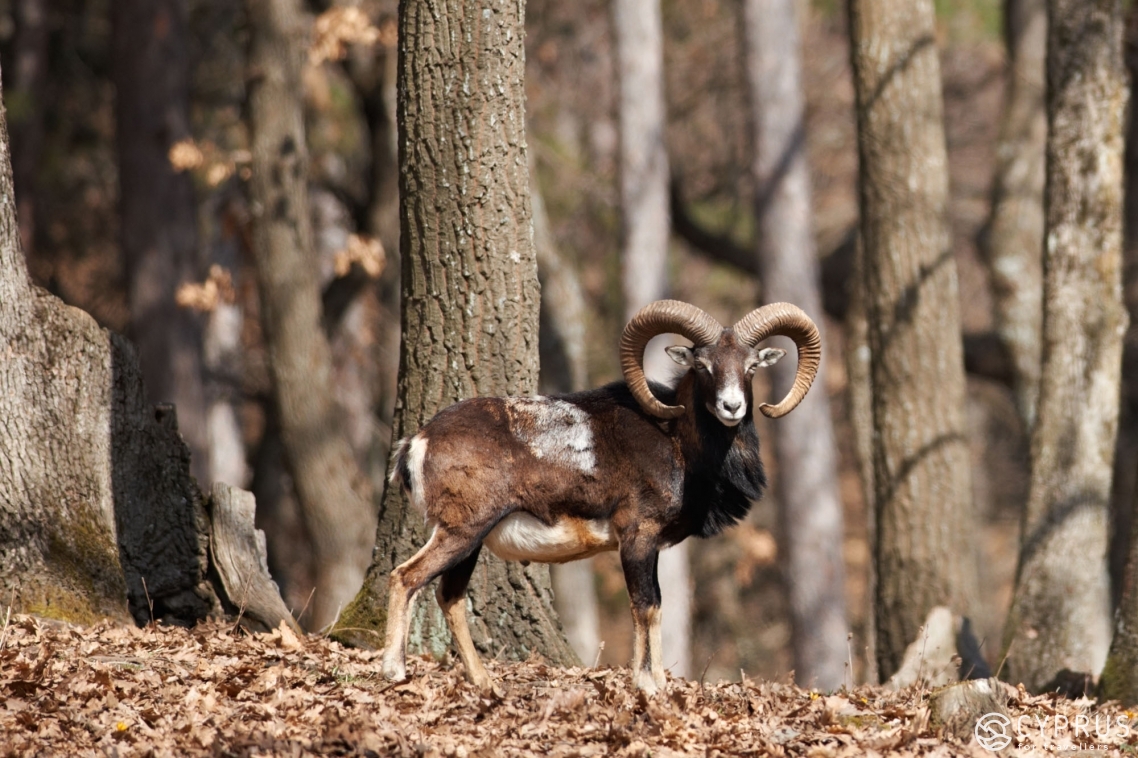
In Cyprus, you can also encounter species of bat and fruit bat, the names of which people from the northern hemisphere have barely ever heard. For instance, species such as the greater and lesser horseshoe bat, the Egyptian fruit bat, the common bent-wing bat and the lesser mouse-eared bat (the list doesn’t stop there) inhabit the island. In fact, European species of microbats (and even megabats) are pleasant, harmless animals, with no relation whatsoever to vampire bats, feeding on small insects and unripened fruits.

The Egyptian fruit-bat (also known as the Egyptian roulette) belongs to the order Chiroptera. It is the largest bat species which can be encountered in Europe, able to reach 17 centimetres in length. The fur is often light brown, with a brighter, pronounced colour on the belly. They hunt at night, flying up to 40 kilometres and feeding on unripened or spoiled fruit. These fruit bats are often kept against their will as household pets.
The lesser horseshoe bat is the smallest bat in Europe, with a wingspan of no more than 250 millimetres and a weight of 9 grams.
The long-eared hedgehog is another surprising animal on the island, standing out due to its ears, which are of an unusual size for a hedgehog (up to 5 centimetres). The hedgehog itself, however, is quite small — up to 27 centimetres in length, with rather short, thin spines covering its back. In addition, there is nothing covering the creature’s forehead, leaving only an exposed strip of skin.
Long-eared hedgehogs feed on ants, beetles and other insects, as well as fruit on occasion. The favourite delicacy of this hedgehog species is snakes and the eggs of small birds, which they are surprisingly adept at hunting. The hedgehogs themselves, on the other hand, are hunted by birds of prey, wolves, foxes and badgers.
In winter, the long-eared hedgehog goes into hibernation, living off the fat it has accumulated over the summer. You can often encounter them in open spaces: on steppes and near deserts, as well as in the vicinity of human inhabited areas and in gardens.
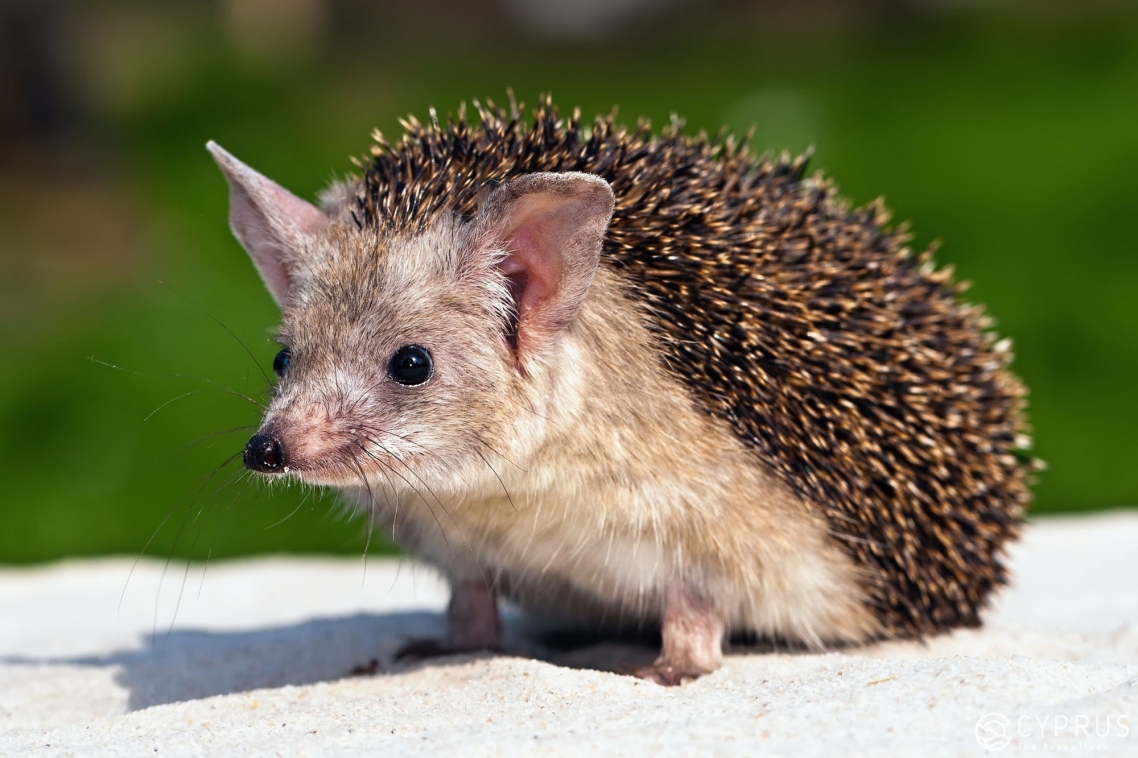
The Mediterranean monk seal, also known by the name the ‘white bellied seal’, is an endangered species of predatory mammal. According to the latest research, fewer than 10 seals inhabit the coastal waters of Cyprus, choosing underwater caves in the region of Cape Greco as their place of dwelling, which is located in the vicinity of Akamas peninsula, not far from Limassol.
Monk seals can reach 250 centimetres in length; their skin shades vary from a dark-grey to a blackish brown with а brighter coat on their bellies. Seals lead a sedentary lifestyle and mainly feed on plaice, mackerel and anchovies.

Extinct Species
The Cyprusdwarf hippopotamus — now an extinct species, which inhabited the island in ancient times until the Holocene age. Archaeological digs in the Limassol region have proven that the animal — a herbivore reaching 121 centimetres in length and weighing 200 kilograms — existed at the same time as the modern man. One of the theories actually links the disappearance of the Cyprus dwarf hippo with the colonisation of the island.
Incidentally, the dwarf-like size of the animal, in addition to the dwarf elephant, which will be discussed later, can be explained by a curious phenomenon known as “Insular Dwarfism”. The decrease in the size of some animal species residing on the island was linked primarily to the relative lack of danger (the dwarf hippo was the largest mammal in Cyprus and in light of their size, predators were slightly apprehensive of them), as well as the food deficit.
The Cyprus dwarf elephant — whose weight could reach 200 kilograms, significantly less than that of its multi-tonne predecessors — inhabited the island in the Pleistocene era. Remains of the creature were discovered at the beginning of the 20th century in one of the caves of the Kyrenia mountains; the Asian elephant is considered as the closest relative to the Cypriot dwarf elephant.
Reptiles
Cyprus is inhabited by a large number of reptile species: chameleons, geckos, agamas, monitor lizards and other lizard species, as well as 8 species of snake, three of which represent a danger to humans.
Thе Cypriot blunt-nosed viper, the most venomous snake in Cyprus, can grow to a length of 1.8 metres. This snake has a subtle greyish or brownish shade to its skin, allowing it to successfully camouflage itself. It can be found in stony foothills, gorges with water sources, or the ruins of abandoned houses. The snake itself doesn’t attack people but may bite if accidentally stepped on or otherwise alarmed. If bitten, you must seek medical attention and have a special antidote serum administered as quickly as possible. Two other types of venomous snake are present on the island, which are less dangerous to humans: the Montpellier snake (brown with bright stripes or olive-green with a yellow belly) and the European cat snake (greyish-beige with dark stripes).
In mountainous regions, you can encounter the Cyprus whip snake with white rings around its eyes, the aptly decorated Dahl’s whip snake and the Caspian whip snake, which can reach three metres in length, in addition to grass snakes and other species, which do not pose any danger to humans.
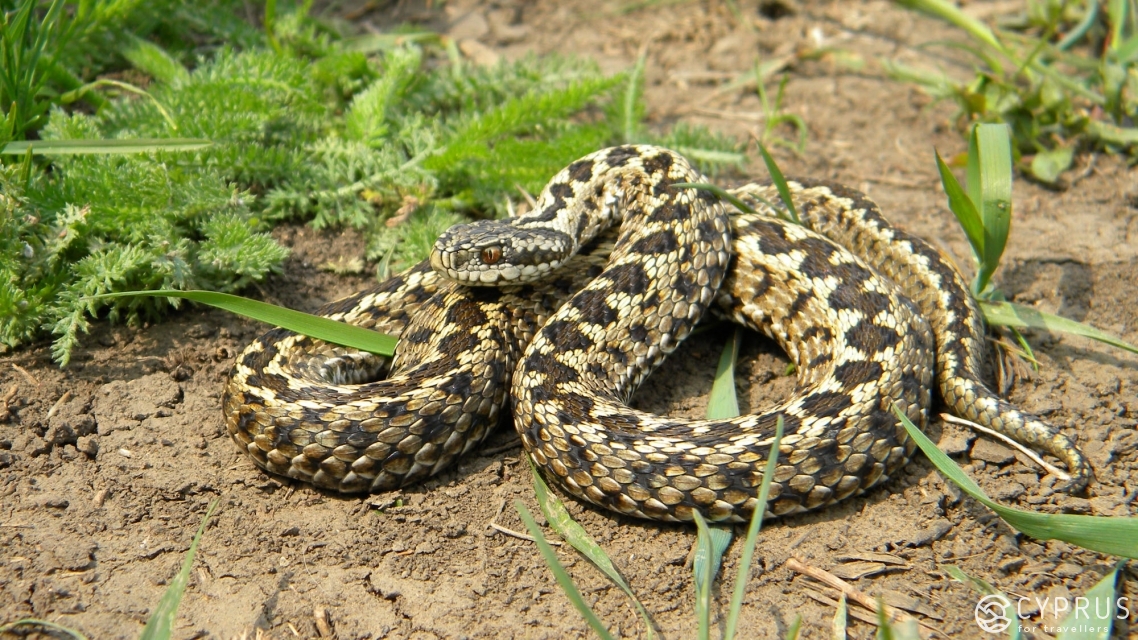
The common chameleon, a species of lizard which can also be encountered on the island with great ease, differs from other animals, as we know, by its unique ability to change the colour of its skin, allowing it to “blend in” with its surrounding reality. It can reach 30 centimetres in length and usually has green coloured skin with small, dark spots. Chameleons feed on insects which they catch with the aid of a long, adhesive tongue.

Geckos, agamas and the so-called snake-eyed lizard, are other species of lizard which are highly common on the island. Their ideal habitats are the crevices of medieval castles and other historical sights.
Sea Turtles
The green sea turtle, the loggerhead and the pond slider are amongst the species of turtle which you can see in Cyprus. Every year they lay their eggs on the coastal sands, often not far from popular beaches. From the beginning of June to the middle of August, during the breeding season, the females leave the sea to lay their eggs in the sand, from which tiny hatchlings emerge seven weeks later. Cyprus is the only place in the Mediterranean which operates a project aimed at protecting and supporting the local turtle population.
The green sea turtle — which can grow to a metre in length and weigh up to 250 kilograms — is the largest of the Mediterranean sea turtles. These turtles may be named so due to the shade of their shells, while also because of their diet, which consists exclusively of sea algae and grass.
The loggerhead turtle is not as large as the green sea turtle but still may grow to 95 centimetres in length. Its head is massive, while five pairs of scutes can be seen on the animal’s shell. Loggerhead turtles feed on molluscs, fish, jellyfish and crustaceans.
Pond sliders can be found in bodies of fresh water covering Cyprus.
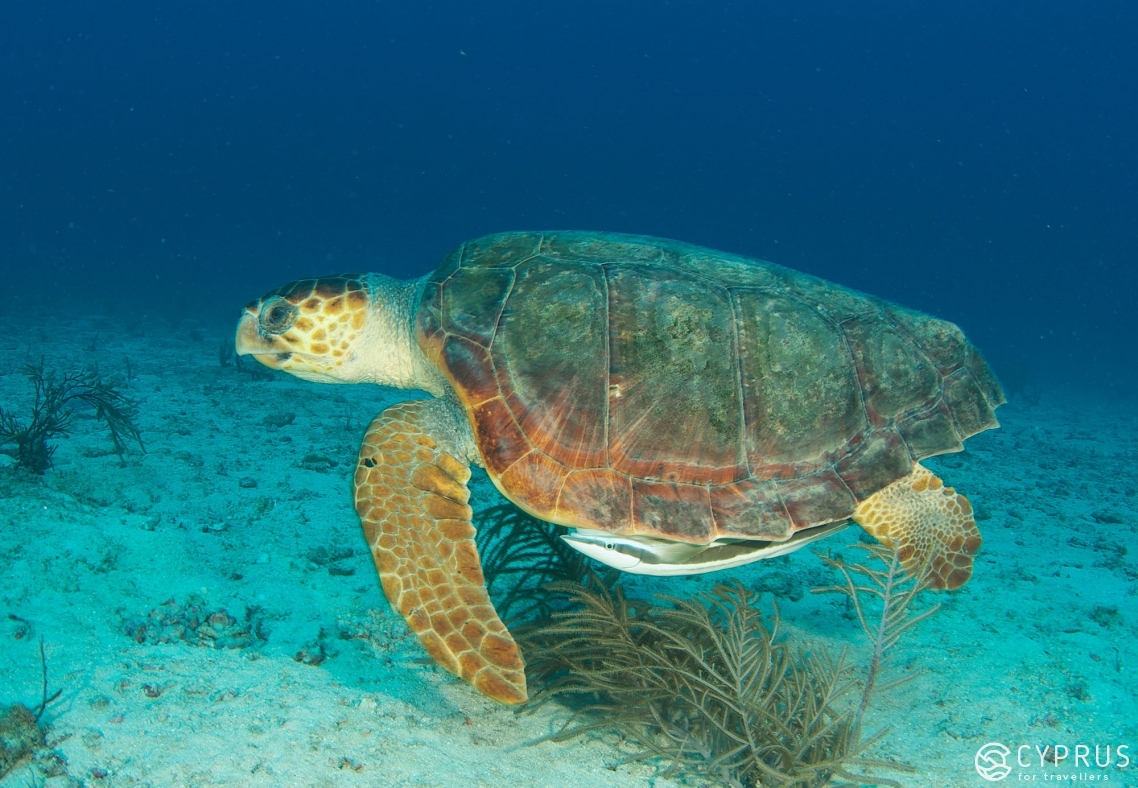
Insects
Naturally, in Cyprus, there are many insects. It’s unlikely that anyone relaxing on a beach or in a hotel will be disturbed by them, but those who love hiking and active tourism may encounter various species of beetle and cockroach (including flying types), as well as midges, flies and spiders. On the other hand, mosquitoes, which drive the inhabitants of our latitudes to despair, are few in number on the island.
Butterfly lovers may find some truly rare specimens on the island: the African “Cleopatra” (orange and yellow), the two-tailed “Pasha”, the local “Cyprus Meadow Brown” and the famous “Red Admiral”.

Birds
Almost 400 species of bird inhabit Cyprus (amongst which there are local and migratory species — the island is situated in the centre of a migration route to the South). They can mainly be encountered in the forest regions of the Troodos mountains, where chaffinches, nightingales, Bohemian waxwings and other birds nest, as well as birds of prey — Kites and Eastern Imperial Eagles, which amongst others, are on the verge of extinction.
In addition, Cyprus is home to some birds featured on the list of endangered species: the griffon vulture and Eleonora’s Falcon — which gained its name in honour of a medieval ruler who protected birds of prey — as well as the Egyptian vulture, the common vulture and the Eastern imperial eagle. Whole flocks of flamingoes can be seen during winter in the salt lakes situated not far from Larnaca. Storks, cranes, pelicans, stormy petrels and seagulls can be found on the island, as well as cormorants, ducks, buzzards and dozens of other feathered species.
